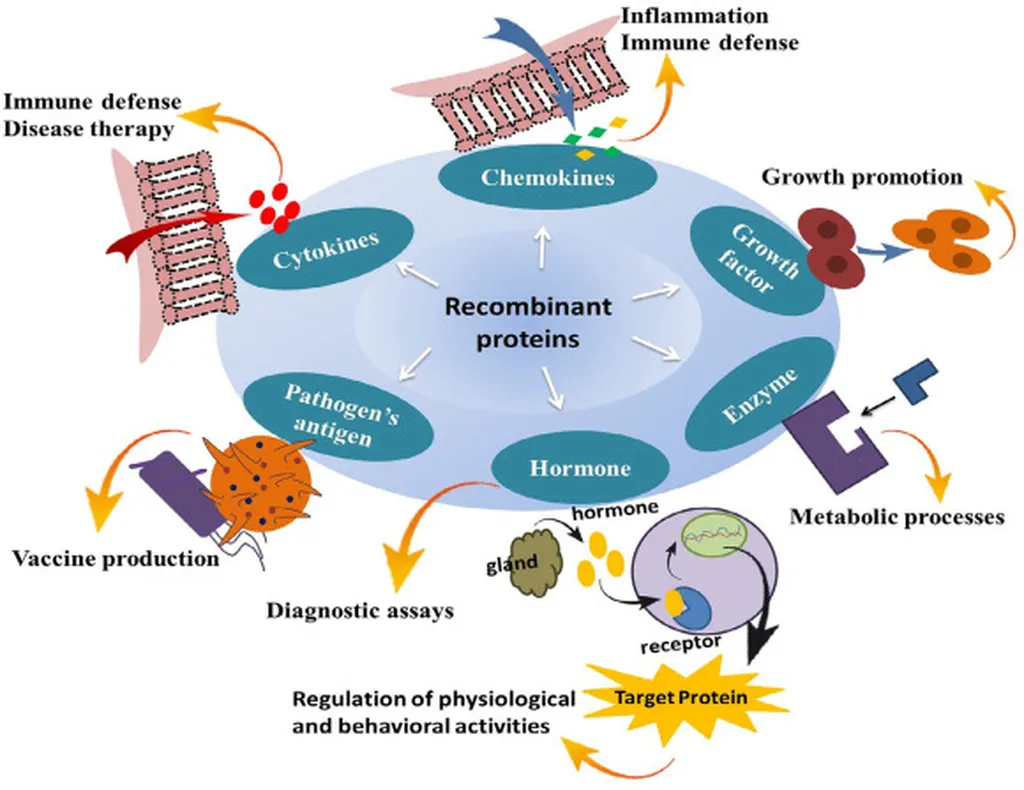In the world of aquaculture, where the demand for sustainable seafood is ever-growing, a significant breakthrough has emerged from the laboratories of the Yellow Sea Fisheries Research Institute in China. Researchers, led by Dr. CHEN Yan, have successfully identified and expressed the recombinant follicle-stimulating hormone beta subunit (fshβ) protein in Conger myriaster, a commercially important fish species. This achievement, published in the journal *Progress in Fishery Sciences* (translated from Chinese as *渔业科学进展*), could potentially revolutionize the aquaculture industry and bolster the energy sector’s quest for sustainable protein sources.
Conger myriaster, a type of conger eel, is highly prized in fisheries and aquaculture. However, the artificial culture of this species faces a critical challenge: the inability of their gonads to mature naturally in captivity due to insufficient synthesis of endogenous gonadotropins. This limitation has necessitated the capture of wild fry to maintain aquaculture operations, a practice that has led to a notable decline in wild resources. Dr. CHEN Yan and her team’s research addresses this pressing issue head-on.
The team cloned the coding sequence (CDS) of fshβ using PCR techniques and conducted a comprehensive bioinformatics analysis. They discovered that the CDS of fshβ comprises 378 base pairs, encoding 125 amino acids. The fshβ protein was found to have a molecular weight of 13.19 kDa, with an aliphatic index of 71.04 and a theoretical isoelectric point (pI) of 6.00. The instability index value of 51.57 indicated that the protein is relatively unstable.
One of the most intriguing findings was the presence of a highly conserved GHB functional domain within the fshβ protein, comprising 104 amino acids. This domain is crucial for the protein’s function and is highly conserved across different species. The hydrophilicity and hydrophobicity analysis revealed that the fshβ protein is hydrophilic, with specific amino acids exhibiting varying degrees of hydrophobicity and hydrophilicity.
Dr. CHEN Yan explained, “The leader peptide and transmembrane domain analyses revealed that the 1–19 amino acids are signal peptides without any transmembrane domains. This is significant because it indicates that the protein is likely secreted, which is consistent with its role as a hormone.”
The team also identified two N-glycosylation sites and three O-glycosylation sites, as well as 14 potential phosphorylation sites within the fshβ protein. Subcellular localization analysis showed that the fshβ protein is mainly localized in the nucleus, which is consistent with its role in regulating gene expression.
The secondary structure of the fshβ protein was found to comprise an alpha helix (12.0%), extended strand (24.8%), and random coil (63.2%). The tertiary structure of the C. myriaster fshβ protein was compared with that of other species, including Anguilla japonica, A. rostrata, A. Anguilla, A. marmorata, and Homo sapiens. The results showed that the C. myriaster fshβ protein tertiary structure is similar to that of other eels but differs from that of humans.
Dr. CHEN Yan noted, “The sequence alignment and phylogenetic analysis revealed that the C. myriaster fshβ exhibited a closer evolutionary relationship with other eels. This is not surprising, given that these species share a common ancestor. However, the low homology with other bony fish and mammals indicates that fshβ has evolved differently in these species.”
The team successfully produced recombinant C. myriaster fshβ protein using the pET-28a(+) expression system. They optimized the induction conditions to achieve efficient expression of the protein. SDS-PAGE analysis confirmed the presence of a thickened band at 26.0 kDa, indicating successful expression of the recombinant protein. Western blot analysis further confirmed the presence of the purified protein, which was specifically recognized by antibodies.
This research has significant implications for the aquaculture industry. The successful expression of recombinant fshβ protein paves the way for the development of exogenous hormone treatments to induce sexual maturation in parent fish. This could eliminate the need for capturing wild fry, thereby conserving wild resources and promoting sustainable aquaculture practices.
Moreover, the energy sector stands to benefit from this research. As the demand for sustainable protein sources grows, aquaculture is increasingly seen as a viable alternative to traditional livestock farming. The development of sustainable aquaculture practices, such as those enabled by this research, could help meet this demand while reducing the environmental impact of food production.
In conclusion, Dr. CHEN Yan and her team’s research represents a significant step forward in the field of aquaculture. Their work not only addresses a critical challenge

